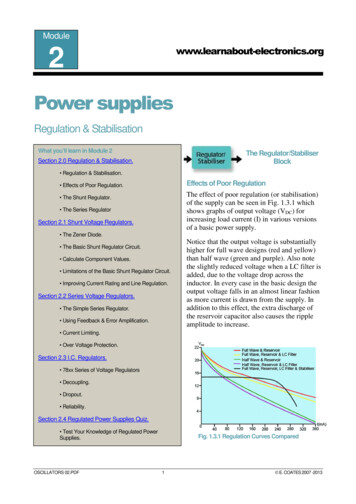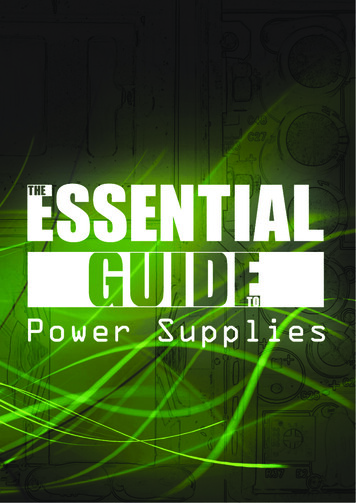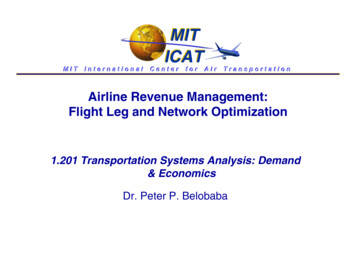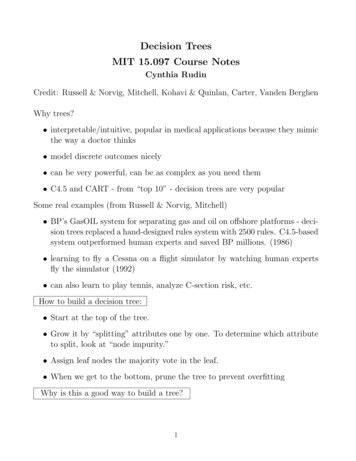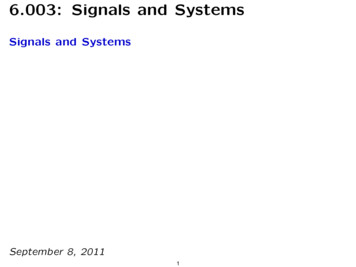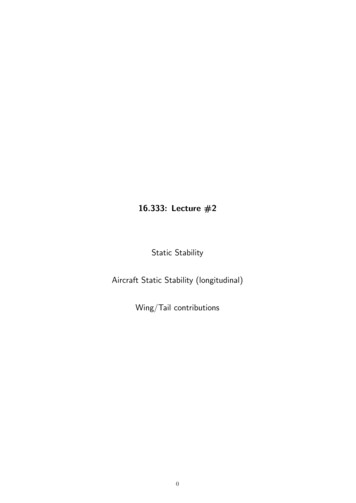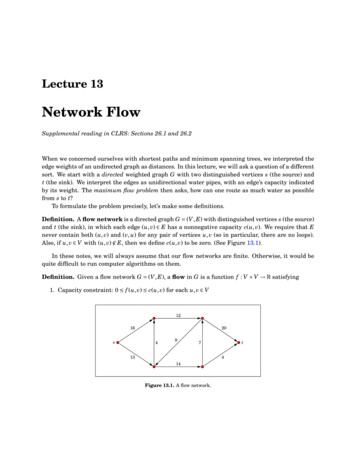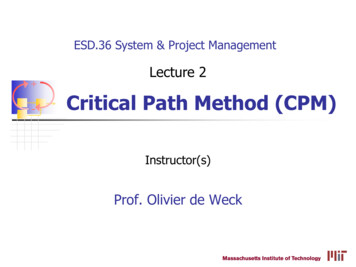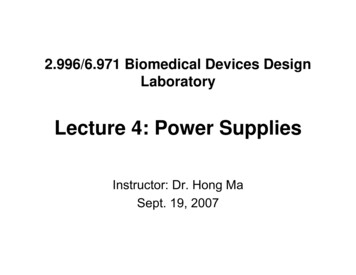
Transcription
2.996/6.971 Biomedical Devices DesignLaboratoryLecture 4: Power SuppliesInstructor: Dr. Hong MaSept. 19, 2007
Key Problem Ideal voltage sources do not exist! Voltage regulators – use feedback to reducesource impedance
Trends in Power Supply DesignMultiple Devices - One Power ltiple Devices - Multiple SupplyBattery
iPodBreakdownImages removed due to copyright restrictions.iPod circuitboards. C1: Linear tech (LT4055) USB power controller / Li-ion battery chargerC6: PortalPlayer (PP5002) CPUC8: Broadcom (BCM2722) multimedia processorC9,C10: Philips (TEA1211, PCF50605) DC-DC power suppliesC11: Cypress Semi (CY8C21) 8-bit microprocessor
Bench Power Supplies Stable, low noise Beware: Not all supplies are push-pull Long cables can introduce noise– Good practice to braid cablesPhotos removed due to copyright restrictions.
Commercial Power SuppliesParameters Wattage? Regulated or unregulated? Protected against short circuit? Stability at different loads?Photos removed due to copyright restrictions.
“Wall-warts” Ubiquitous amongconsumer electronicdevices Spec’ed for voltageand power output Output can be veryinaccurate!
BatteriesPhoto removed due tocopyright restrictions.Typical Discharge Curves Very quietOutput voltage is not constantSteep fall beyond the kneeRechargable batteries cannotbe recovered once dischargedbeyond the knee Internal resistance: mΩ Æ Ω
USB PortsPhoto removed due tocopyright restrictions.Type A – PCType B – peripheral Output range from 4.4V to 5.25VSelf-powered hub: 500mABus powered hub: 100mASuspend-mode max. 500µAStart-up requirements:– Device draw 100mA duringenumeration– In-rush current control: powersupply capacitance 10µF Start-up strategies– Resistor– Regulator with enable
Linear Voltage Regulators 78xx series positive regulators79xx series negative regulatorsMax output current 1.5AQuiescent current draw 5mAThe good: easy to use, highly stableThe bad: inefficient, heat dissipation
Drop Out Voltage in Linear Regulators Drop out voltage defined as when ΔVOUT 100mV Output stage – NPN Darlington pair 2V of head room required
LDO: Low Dropout Regulator P-MOS output stageAct as a variable resistorDrop out as low as 50mVOutput capacitor required forstability Other features:– Current limiting– Reverse battery protection– Power good output Example: TPS79733–––––50mA max output105mV drop outCurrent limited at 300mA1.2µA quiescent current 0.34 in 1k quantity
Switching Regulators Advantages– High efficiency (80% typical)– Low heat dissipation Disadvantages– Output switching noise– Layout and external component selectionimpacts performance– Higher cost / size
Step-Down (Buck) Converter VOUT VIN Power switch can beinternal or external Synchronousconverter avoid diodelosses Example: LT1934– Up to 34V input– 12µA– 80% efficiency
Step-Up (Boost) Converter VOUT VIN TPS61201:– 0.3V min. input voltage!– 50% efficient
Buck-Boost Converter
Layout for Switching Regulators 1/4 Reference: J. Barrow “Reducing ground bounce in DC-to-DC Converters – Some Groundingessentials” Analog Dialogue 41-06
Layout for Switching Regulators 2/4 Keep low-side switch (Schottky diode) close to CVIN toreduce ground bounce
Layout for Switching Regulators 3/4
Layout for Switching Regulators 4/4
Layout for Boost Converter
Inductorless DC/DC: Charge Pumps LT1044 – 95% efficiency Output ripple 10mVPP unregulated
Battery Insertion and Brown-outSolutions: Reset supervisorSoft-start
Reverse Battery ProtectionUsing a Schottky diodeUsing an N-Channel MOSFETTo voltage regulator
Latch-up Latch-up – a low impedancepath between the supplyrails Triggered by parasiticdevices within the CMOSstructure A concern when the input ofdigital components exceed1 diode drop of its supply
Power Supply Sequencing Simple method: set different time constants for each enable pinAlternatively: use a microprocessor to manage startup sequenceFor complex digital systems, use dedicated power supplysequencers
Startup for MSP430 2xx Family
Power Supplies – the Complete Picture
Prior Art SearchWhat to Look for:1. Exact device – same technology, samepurpose2. Solve the same problem, but in adifferent way3. Uses the same method, but solve adifferent problem
Outline Problems associated with power supplies––––– Power supply voltage uncertainty: wall-wart, battery dischargeSource resistance, noise couplingBattery insertion and brown-outPower supply sequencingReverse power supply / batteryNot all power supplies are created equal: push vs. push-pullTopologies: one supply vs. many suppliesLinear power supplies – LDO: quiet, simple, low-costSwitching power supplies– Topologies: buck, boost, buck-boost– Key specifications– Layout techniques Inductor-less switching power suppliesReverse battery protection: diode, MOSFETBattery charging: NiCd, NiMH, Li, LiPolymerUSB: in-rush current, 500mA for hubs with ext power, 100mA forunpowered hubs, 4.5-5.5V.
Non-ideal behavior of power supplies Source resistance Output voltage uncertainty– Battery discharge characteristics– Load, cable length, temperature dependence Battery insertion and brown-outReverse batteryStartup characteristicsPower supply sequencing
19.09.2007 · OUT 100mV Output stage – NPN Darlington pair 2V of head room required. LDO: Low Dropout Regulator. P-MOS output stage Act as a variable resistor Drop out as low as 50mV Output capacitor required for stability Other features: – Current limiting – File Size: 1MBPage Count: 31
